It’s been a weird San Diego Comic-Con. The weekend was strangely quiet and subdued despite the large, eager crowds. And it was clear what (or who) was missing. The creators/writers whose work we love and the talented actors who bring those stories to life are all on strike.
The WGA and SAG-AFTRA strikes have affected the con in so many ways. Not all of them are bad, but they’re definitely … different.
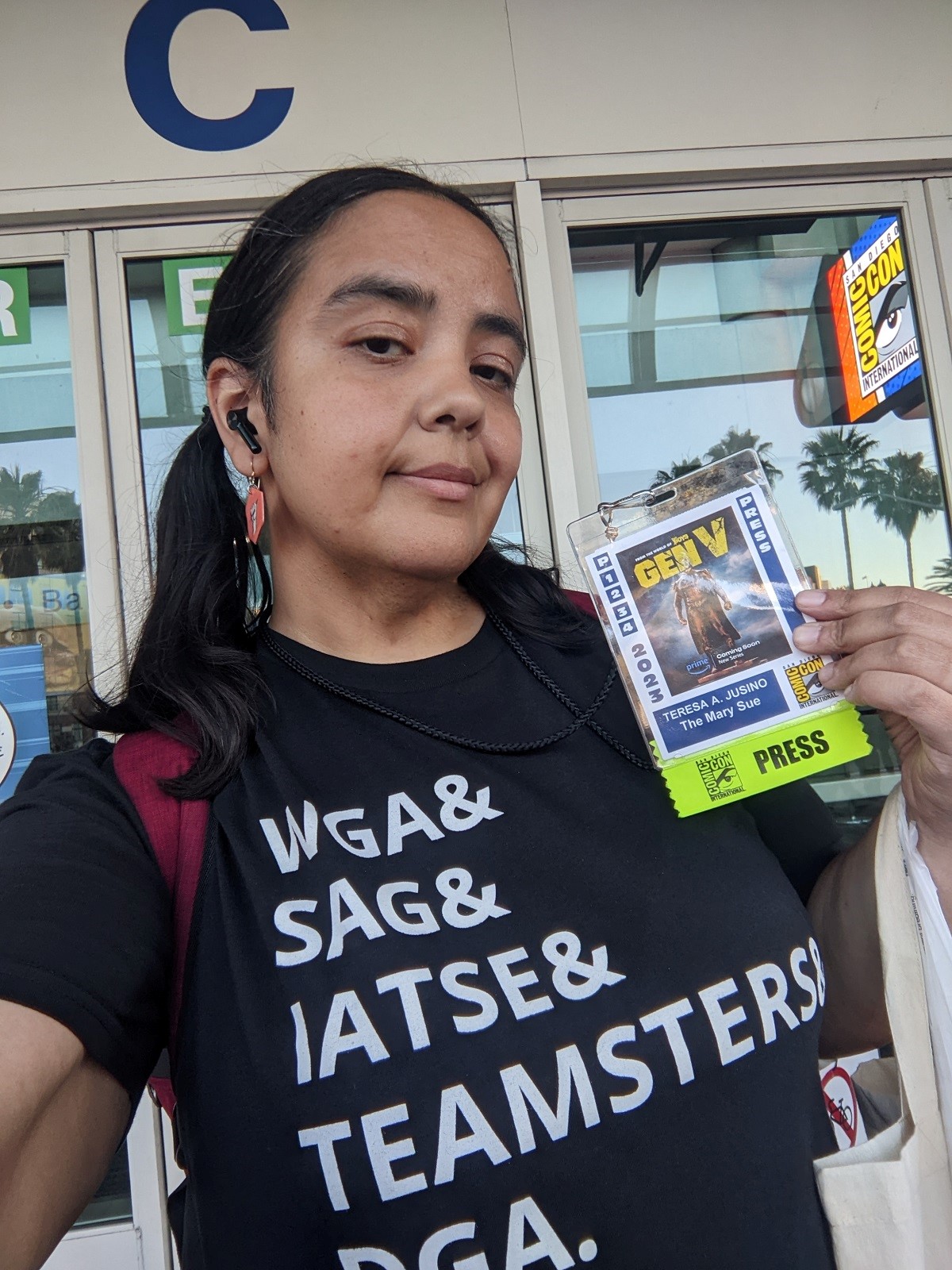
Strike support among the fans!
The Hollywood strikes are having an effect on SDCC, and fans know it! But contrary to what the AMPTP might hope—that fans would focus their nerd rage on actors and writers—I’ve seen a lot of strike support from fans, whether they themselves are interested in becoming actors or writers or not!
I stopped this guy Alex (below) near the Gaslight District on Day 1 of SDCC when I saw his shirt and asked if I could take a photo. While he isn’t a WGA member or even a writer, Alex has friends who are. He wanted to show support at this event, where big companies are promoting their projects despite the lack of participation from writers.
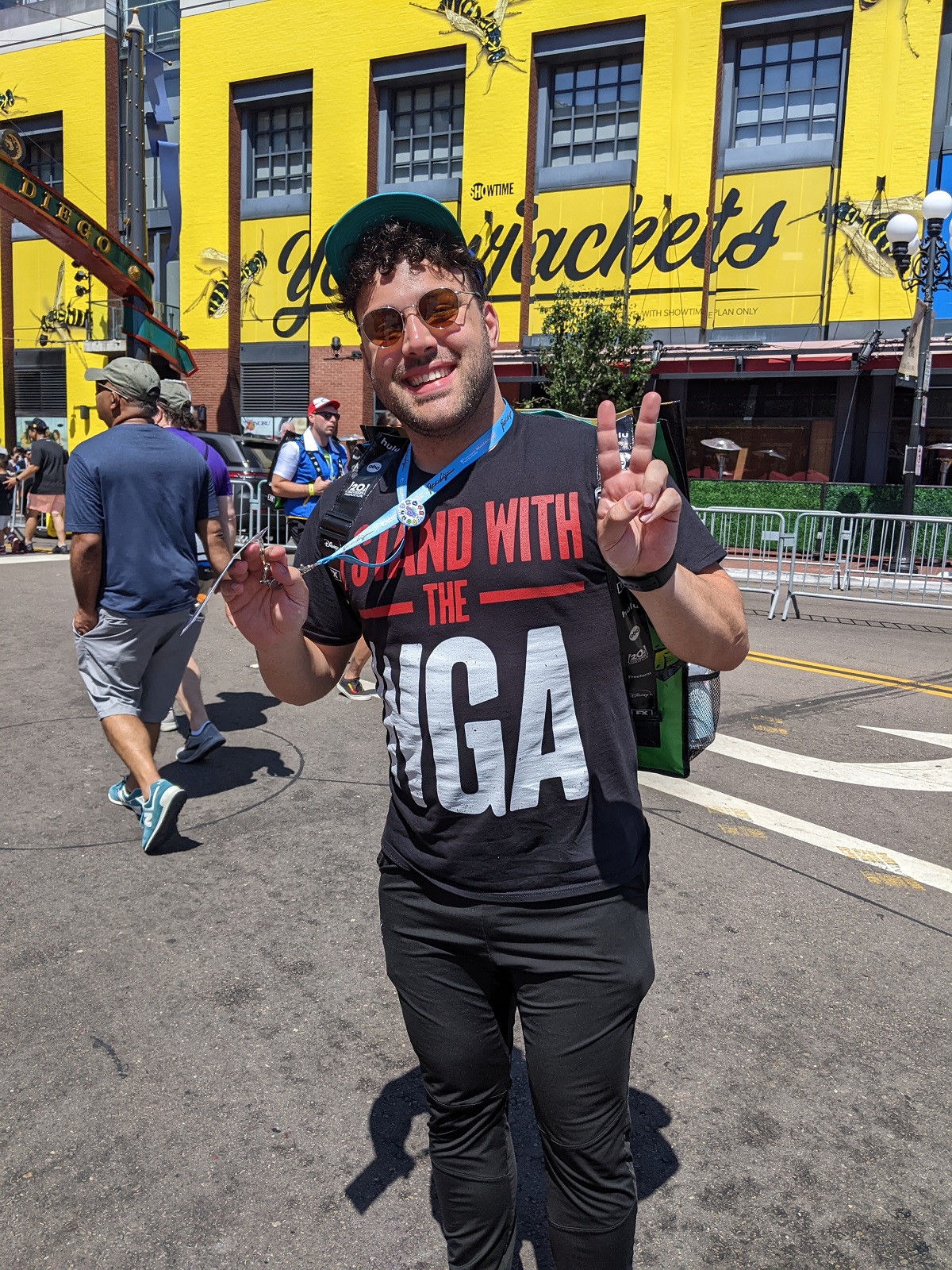
I saw fans throughout my time at SDCC expressing support in one way or another. A woman in a wheelchair with a sign on the back that said “SUPPORT WRITERS! WGA ON STRIKE!” I saw at least three writers with WGA strike signs walking around the con. And when I wore my union solidarity shirt, many people gave me drive-by compliments or raised a fist of solidarity.
While the strikes have certainly changed the vibe of SDCC itself, they haven’t soured the sentiment among fans. They’ve merely given fans another way to express love for their fandoms by expressing love and support for their favorite creators and actors.
Actors & writers in attendance made the strikes a focus: by mention or by omission
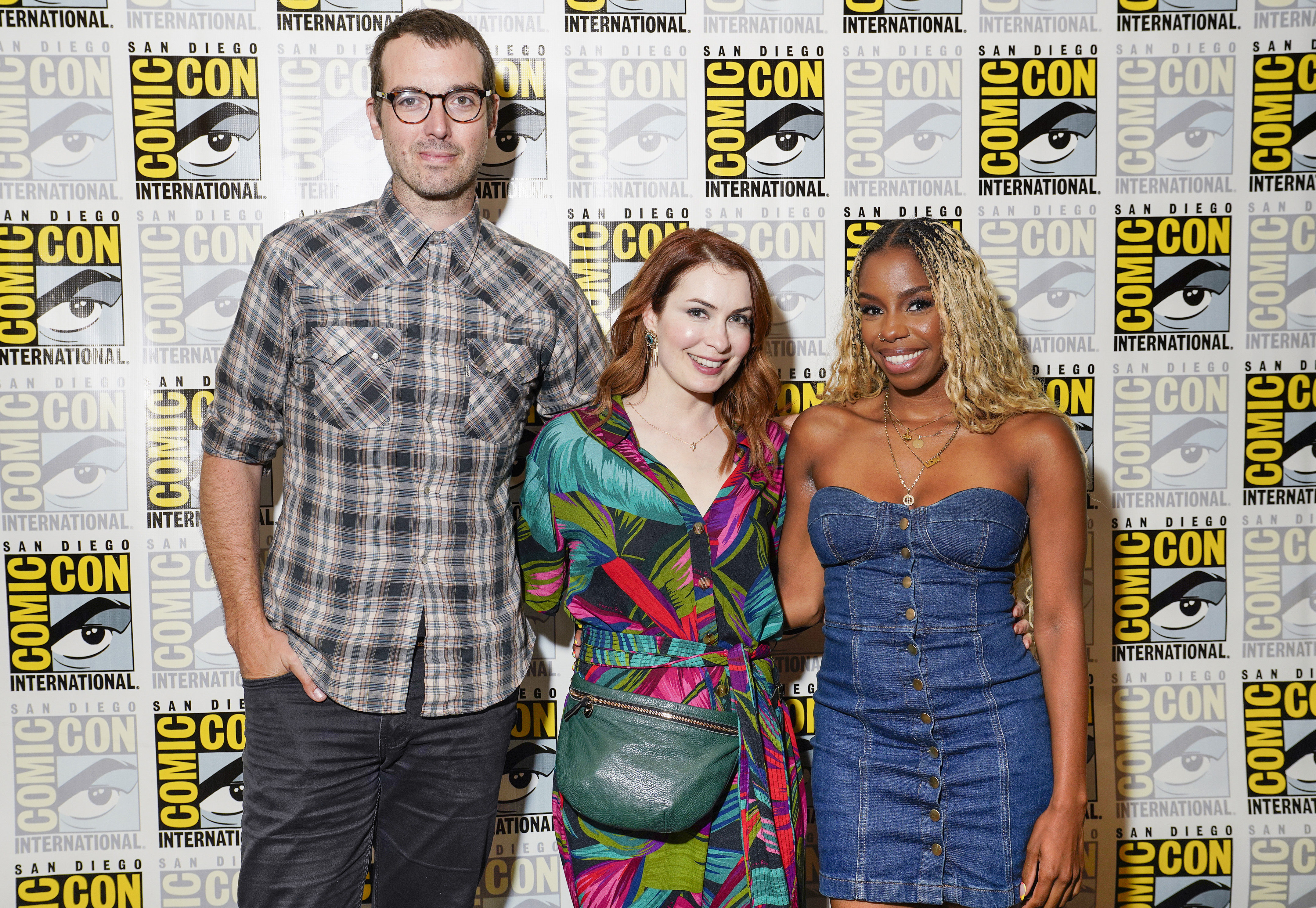
There were some recognizable names in attendance this year at SDCC, but due to WGA and SAG-AFTRA strike rules, they were only able to promote projects outside of TV/film (which aren’t under their AMPTP contract). Some brought up the strike, while others pointedly didn’t mention it. Still, others had lots of fun “mentioning it without mentioning it.”
When I interviewed Felicia Day about her upcoming Audible drama, she came out of the gate mentioning the strike. She addressed the strike again later in the interview, and while that didn’t get into my piece, I’ll include it here. She talked about the importance of telling your stories however you can without waiting to be given an opportunity by mainstream Hollywood. Referring to Third Eye, she said:
“I couldn’t get it through Hollywood, and I spent years wasting stories and time on development. This is why my heart goes out to every WGA member. What they have to go through to get anything made, and how they’re being devalued now by the producers who literally don’t have anything without that script is really awful. So, that’s kind of why I stopped doing those kind of jobs. My heart couldn’t take it. I would get so personal with my stories, and I think that’s the only way you make something that lasts. And even if only one other person is affected by it, that’s the reason that story and that character exists.”
One of the larger names in attendance this year was Jamie Lee Curtis, who did a panel and signing to promote her first graphic novel Mother Nature, which tackles the issue of climate change. Variety reports that, “During the panel, Curtis did not address the ongoing actors strike, which has kept performers from promoting their acting work at Comic-Con.” It was understandable that Curtis focused her attention on the book she was there to promote. First, because it’s about an important issue she really wanted to keep the audience’s attention on. Second, because Curtis is generally so outspoken, not talking about it was probably louder than if she had. Hell, her not mentioning it garnered a mention in Variety!
The Blerd Panel was hands-down the most fun panel I attended at Comic-Con. Unsurprising, considering it was a panel of brilliant POC writers who also happen to be friends IRL. The panel covered what it means to be a “blerd,” aka Black nerd, though their cohort is open to brown nerds too. Actor/director Sujata Day, known for her work on Insecure and Awkward Black Girl, is in their friend group and was on the panel as a “brown, Indian woman.”
While they had a great time talking about how their “blerdiness” feeds their creativity, moderator Malcolm Barrett entertained by not mentioning panelists’ illustrious credits in his intros. When introducing writer Lamont Magee, he said that Magee was known for his work on “Negro Thunder.” Writer Ubah Mohamed is known for her work on “Guys Who Fight in Suits.” And when telling an anecdote about watching a superhero show with his wife, Barrett said they were watching “Guy Who Fights Without Seeing.” All of the panelists expressed unconditional support for the strikes but refused to allow them to dim their joy.
Smaller/lesser-known projects have less competition for attention
With fewer Hollywood blockbuster offerings at SDCC, American independent films and international productions had the space to step to the front.
First-time feature director Bishal Dutta was at SDCC promoting his upcoming horror film It Lives Inside, starring Never Have I Ever‘s Megan Suri. There’ll be more coverage of this film here soon, but while it might have been drowned out by the usual Hollywood suspects, their absence allowed for smaller American indies like this to get more attention.
Ditto for the Australian indie horror film Talk to Me. The film had a screening (and a kegger after-party!) at SDCC, and its Australian actors were able to promote the film because they’re in a different actors’ union.
There were mysterious press releases and signs at SDCC referring to “Project K.” Turns out “Project K” is an awesome-looking Indian sci-fi film called Kalki 2898-AD, announced by Indian production company Vyjayanthi Movies and presented as “India’s Biggest Cinematic Universe.” I gotta say, the footage they shared at SDCC looks amazing!
China’s Immortal Studios is “the world’s first and only AAPI-led Wuxia Storyverse,” and is making its second appearance at SDCC after introducing their immersive Wuxia universe, Project Immortal, last year. They’ll introduce new titles, a partnership with the original Shaolin Temple of China this fall, and a platform where fans can “participate in the overall development of stories, from ideation to the delivery of the first comic, in collaboration with the Immortal creative team.”
And then there were the actual strike-related panels
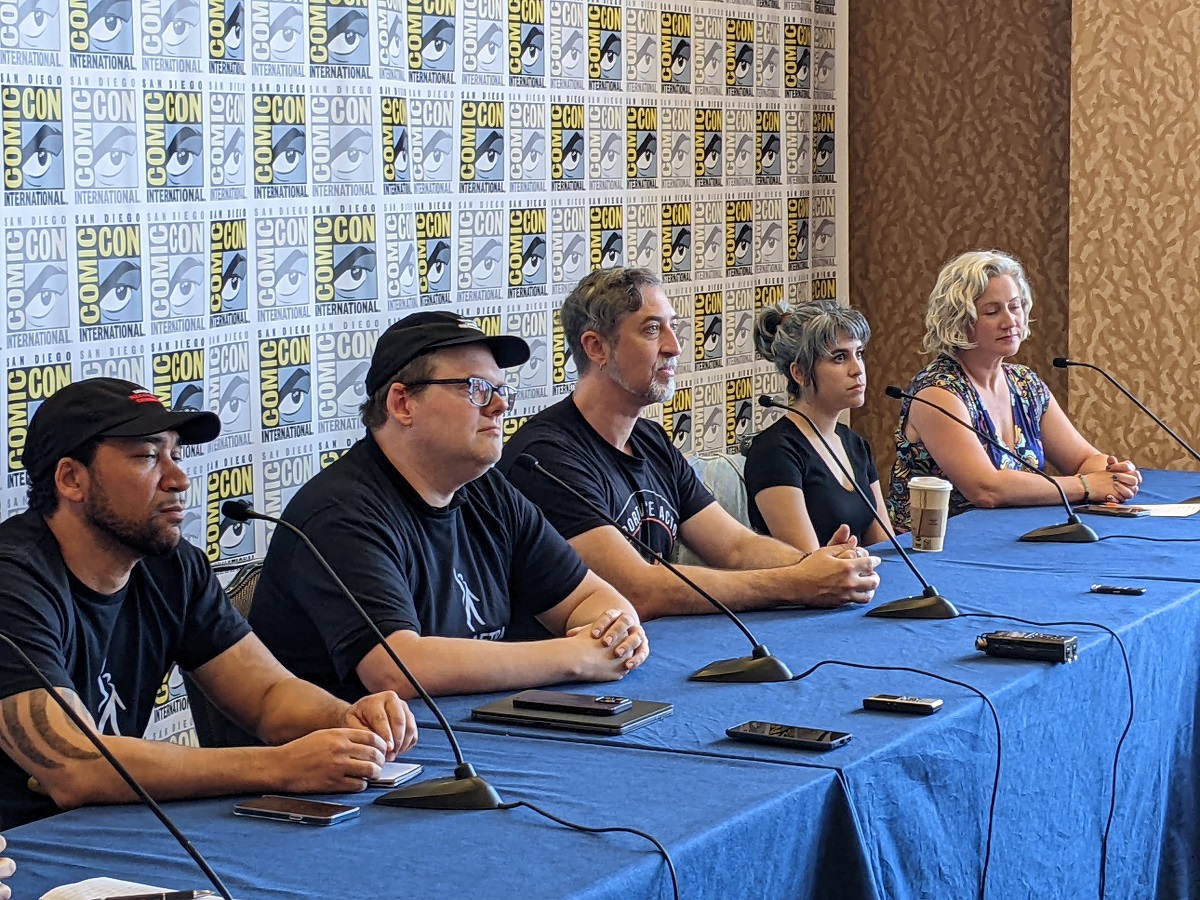
The National Association of Voice Actors (NAVA) hosted a press junket and panel at SDCC on the hot-button topic of “AI in Entertainment.” Moderator Linsay Rousseau (God of War: Ragnarok), joined founder of NAVA, Tim Friedlander, and panelists Ashly Burch (Mythic Quest), Cissy Jones (The Owl House), SAG-AFTRA board member, Zeke Alton (The Calisto Protocol), and newly-added panelist Duncan Crabtree-Ireland, Nat’l Executive Director and Chief Negotiator at SAG-AFTRA.
They talked about using existing legal structures while also creating new standards for performers and producers to collaborate, while still protecting the individual rights of voice actors to performance and publicity. Having both a SAG-AFTRA board member and the union’s National Executive Director on hand gave the panel more authority than it might have had otherwise, and it was interesting to hear not only the actors’ insights into what they face with regard to AI but the NAVA and SAG-AFTRA takes on what can be done about it.
The “Writer’s Journey: What Happens Now? (The Post-Strike Marketplace)” panel was supposed to have three panelists, but only one was there when I arrived. Writer and moderator Brandon Easton (Transformers: WFC, Overwatch 2) spoke with writer Kristine Huntley (Freakish, Surfside Girls) about what it’s like to be a writer right now. They discussed the experience of being a writer over the past few years as the industry has careened toward these strikes. The overall message was that writers should feel encouraged to explore mediums outside of film and TV (prose, comics, video games, audio dramas, theater) because they don’t need studios to be creative people.
That seemed to be the whole strike vibe at SDCC. We’re fine without you, studios. We’ll keep making and enjoying things. But creatives deserve to be treated with respect. They know it, and their fans (the customers who buy your offerings) know it too.
(featured image: Dia Dipasupil/Getty Images)



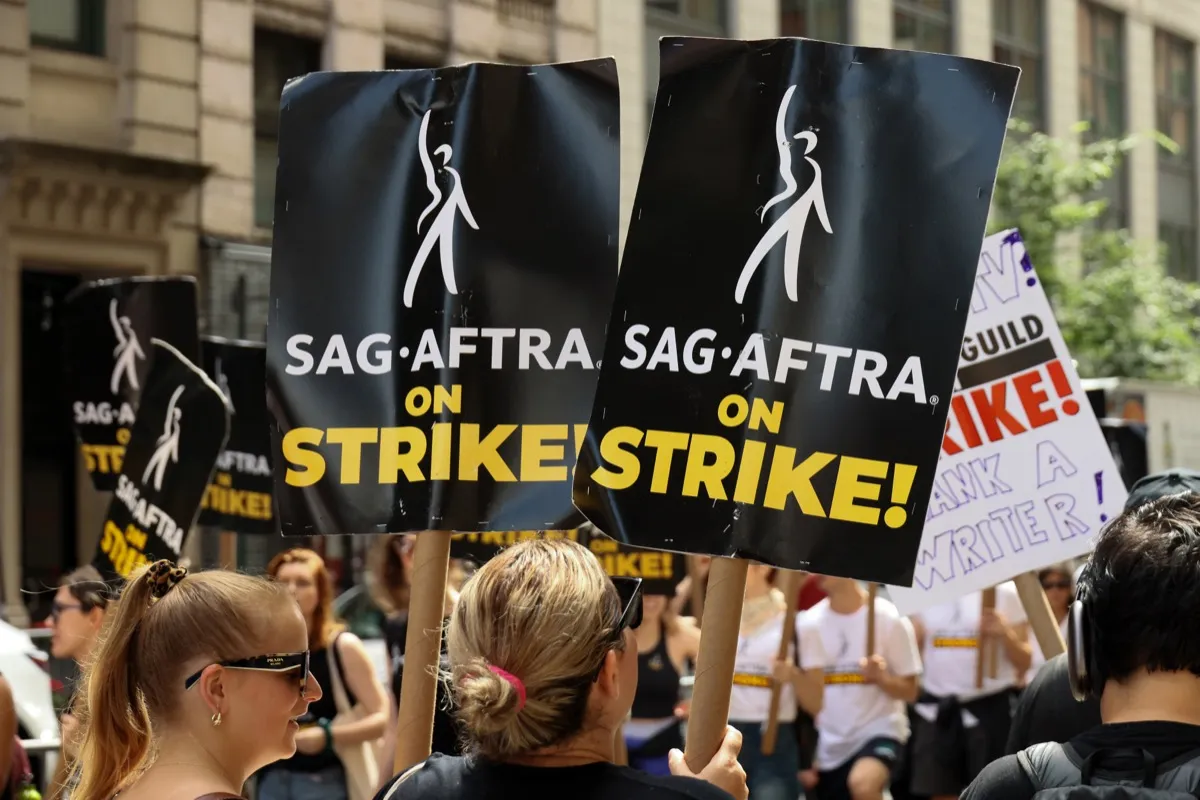





Published: Jul 23, 2023 7:28 PM UTC